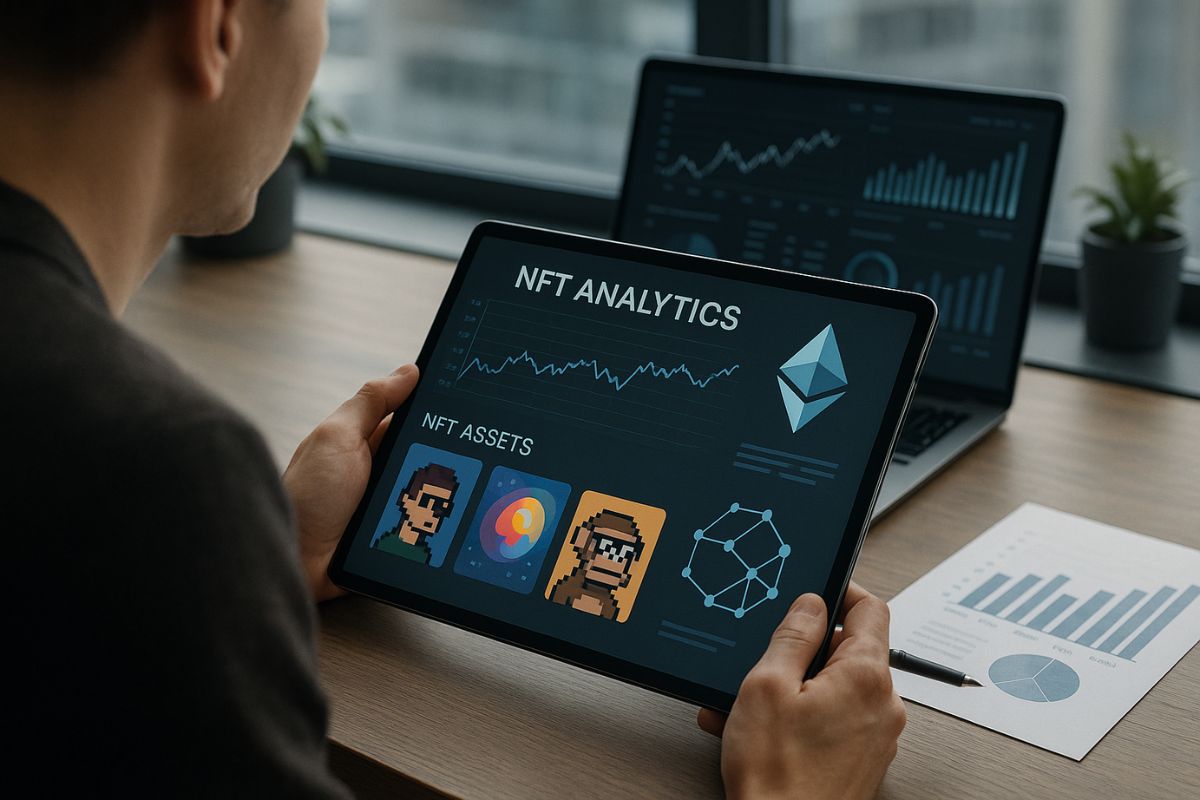Not all NFTs are created the same way. Behind each digital collectible, there’s a set of rules that define how it behaves, how it’s stored, and how it’s traded. These rules are known as NFT standards. For anyone involved in buying, selling, or creating NFTs, understanding these standards makes everything a little less confusing.
Standards decide how NFTs interact with platforms, wallets, and other smart contracts. They help keep things consistent. Without them, NFT marketplaces would struggle to display or transfer tokens correctly. These standards are like the glue that holds everything together.
What You’ll Learn About NFT Standards
NFT standards help define how digital tokens work on a blockchain. In this article, you’ll learn:
- What NFT standards are and why they matter
- The most common standards like ERC-721 and ERC-1155
- How standards shape what creators and collectors can do
- Why these rules impact everything from royalties to interoperability
Whether you’re just curious or planning to launch your own NFT project, this guide can help you understand how things work behind the scenes.
What Is an NFT Standard?
An NFT standard is a set of instructions that tells a blockchain how to handle a specific type of token. Think of it like a format or recipe. When developers follow that format, different tools and apps can understand how the token should behave.
The most well-known NFT standards live on Ethereum, but other blockchains have their own versions too. These standards explain things like how to transfer ownership, how to store metadata, and how to connect with marketplaces.
Without a common standard, NFT platforms wouldn’t know how to display your artwork or keep track of ownership. That consistency is what allows NFTs to move across different apps and websites.
ERC-721: The First NFT Standard
The ERC-721 standard helped define what an NFT could be. Created in 2018, it was one of the first widely used formats for unique tokens on Ethereum.
Each ERC-721 token is one of a kind. That means no two tokens share the same data or value. This works great for art, collectibles, and any project where each item is meant to be different from the rest.
ERC-721 tokens include metadata like title, image URL, and description. These details help platforms display the token properly and give collectors important context.
ERC-1155: More Flexibility for Creators
After ERC-721 came ERC-1155. This standard introduced the ability to manage both unique and identical tokens under the same smart contract. It’s more flexible and efficient.
With ERC-1155, creators can mint one-of-a-kind tokens or large batches of identical items without needing a separate contract for each. This is useful for games, digital merchandise, or any project that needs to support both types of assets.
This format also reduces transaction costs and makes it easier to perform batch operations. For developers and creators, that means faster minting and less gas used.
Why Standards Matter for Buyers and Sellers
For collectors, standards make sure your NFTs show up correctly in your wallet. They also let you move your tokens between platforms without issues. Imagine buying a token that your wallet can’t read. Standards help avoid that kind of problem.
For creators, following a known standard means their tokens are compatible with popular marketplaces. That expands their reach and increases the chance of sales.
Even simple things like royalties, traits, and animations depend on how the NFT is coded. A strong standard supports those features and helps them work across platforms.
Other Standards You Might See
While ERC-721 and ERC-1155 are common, other blockchains use different systems. Solana uses the Metaplex standard. Tezos and Flow have their own formats too.
These standards work in similar ways but may handle certain features differently. That’s why some NFTs on Solana behave differently than those on Ethereum. The blockchain’s design influences what’s possible and how easily tools can support it.
As more platforms emerge, we’re seeing more attempts to build cross-chain standards that make it easier to bridge NFTs between ecosystems.
How Standards Impact NFT Design
When planning a new NFT project, creators often start by choosing which standard to use. That decision shapes how their tokens can be distributed, displayed, and stored.
If the project includes limited-edition art, ERC-721 might be the better fit. If it’s a gaming item or a collection with many duplicates, ERC-1155 could work better. The standard sets the foundation for everything that follows.
It also affects how future updates are handled. For instance, if a creator wants to change metadata or add new utility, some standards allow it, while others are more rigid.
The Role of Metadata
Metadata is a big part of NFT standards. It’s where information like names, descriptions, and traits are stored. Good metadata helps marketplaces show the right visuals and details.
Standards define how metadata is formatted and where it’s hosted. Some projects store metadata on-chain. Others use decentralized services like IPFS to keep it accessible.
Well-structured metadata makes it easier to sort and filter NFTs by traits, rarity, or category. That’s especially helpful in large collections with thousands of items.
Evolving With the Community
NFT standards aren’t fixed forever. Developers continue to improve them based on feedback from artists, collectors, and platforms. This ongoing work helps support new features like dynamic NFTs, audio NFTs, or real-world utility.
Community-driven updates keep the NFT space from becoming outdated. New proposals aim to make standards more flexible, secure, and cost-efficient.
Being aware of these changes helps creators stay ahead. It also helps collectors choose projects built on strong, reliable foundations.
NFT standards shape how tokens look, act, and connect across the web. Whether you’re an artist planning a drop or a collector building a gallery, understanding these formats helps you make better decisions.

No Responses